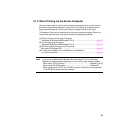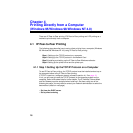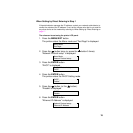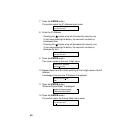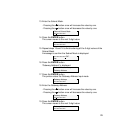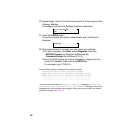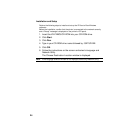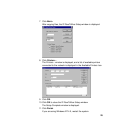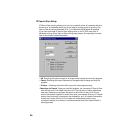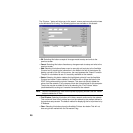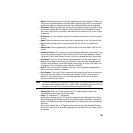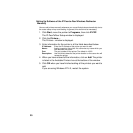
23
4.1.3 Step 3:Installing and Setting Up the IP Peer-to-Peer
Windows Redirector
Windows IP Peer-to-Peer printing allows Windows 95/Windows 98 workstations and
Windows NT 4.0 workstations and servers to print to Network Card printers without an
intervening server and without using IPX. The main features of the Windows IP Peer-
to-Peer printing are as follows:
• Runs on Windows 95/Widows 98 workstations and on Windows NT 4.0 workstations
or servers “out of the box”.
• Implements IP Peer-to-Peer bi-directional printing between Windows workstations
and Network Card printers.
Introduction and Preparation
The Peer-to-Peer implementation uses the TCP/IP stacks that are provided with
Windows 95/Widows 98 or Windows NT 4.0. The provided redirector software will
establish a connection with the printers supporting Peer-to-Peer, using a direct IP
connection over the network.
When configuring the network capabilities for the Windows computer, you must
include the “TCP/IP Protocol”. You do not need to activate any TCP/IP Client
application.
This inclusion of TCP/IP can also be done after initial Windows installation by going to
the Network setup function under Control Panel. To do this, you will need the Windows
CD-ROM.
Note: Because Peer-to-Peer uses the TCP/IP Protocol, TCP/IP operation must remain
enabled on the Network Card, and the Network Card must be assigned a valid IP
address. The name of the Peer-to-Peer printer, as it appears in the Windows Port
List, is the same as the IP Address assigned to the Network Card. The IP Address
may be changed by changing the TCP/IP section using the Web-based
management or MAP utilities.
If a NIC is being moved from a site that had active TCP/IP to a site that does not, the
unit should be reset to factory default to clear the IP Address and other network
information.



